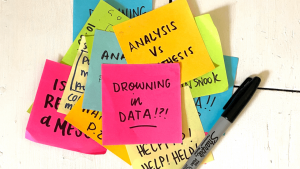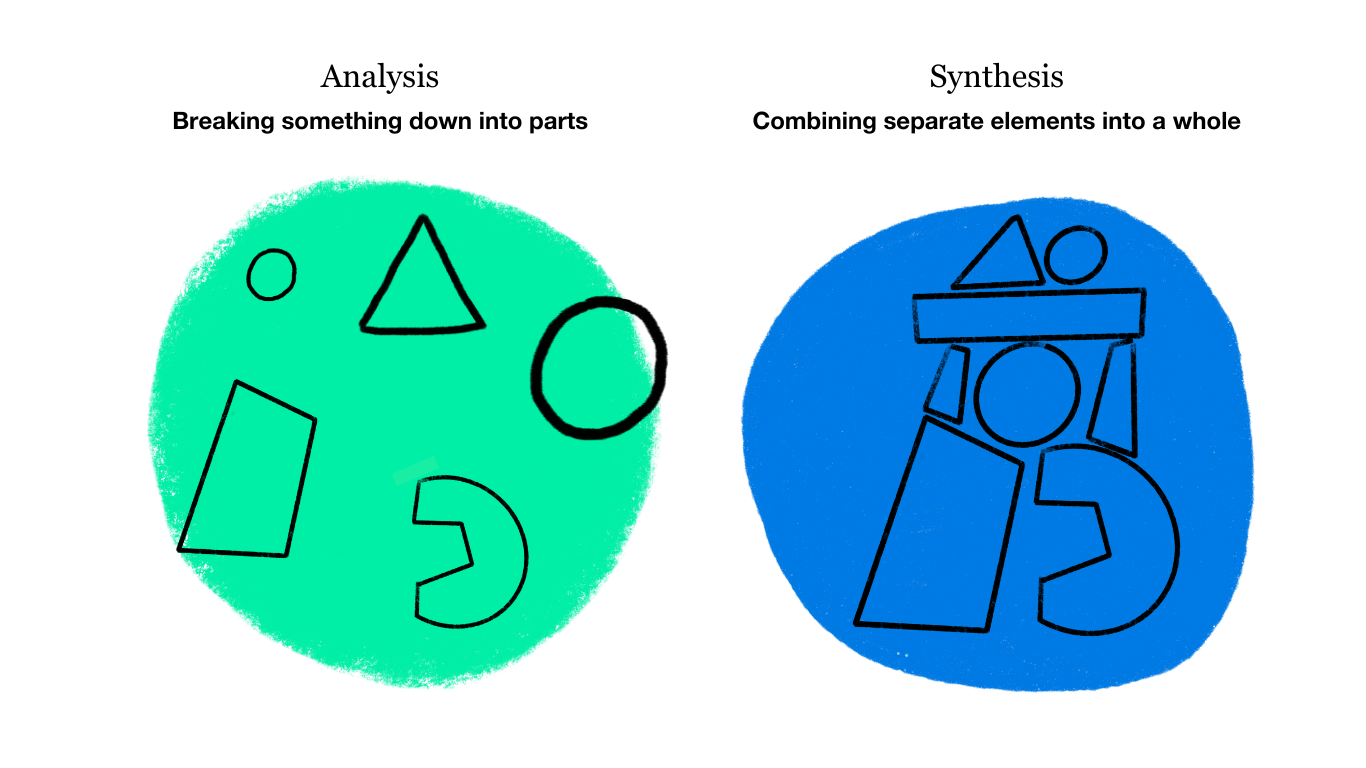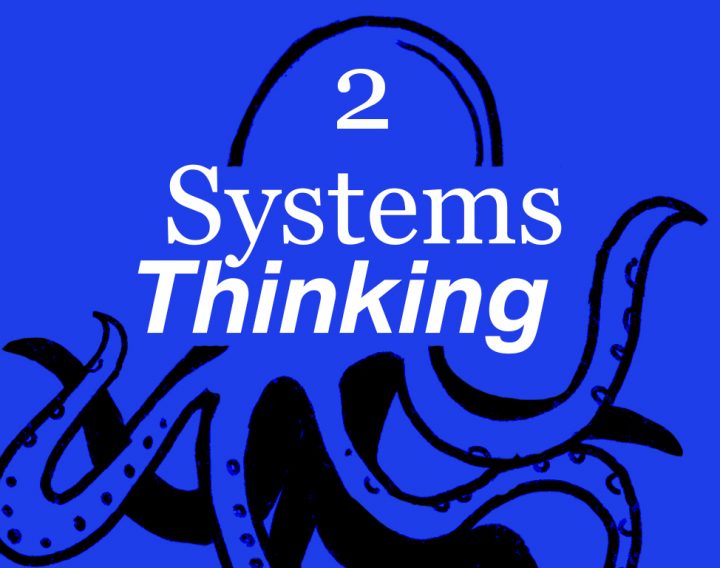Defining the difference between analysis and synthesis in user research

The terms ‘analysis’ and ‘synthesis’ are used differently by different researchers, which can lead to confusion about what processes people are specifically referring to. In this article, Principal User Researcher Jake McCann outlines how we define and use these terms at Snook.
The terms ‘analysis’ and ‘synthesis’ are used differently by different researchers, which can lead to confusion about what processes people are specifically referring to. In this article, Principal User Researcher Jake McCann outlines how we define and use these terms at Snook.
The general goal in most user research projects is to inform the design of products and services so that they meet the needs of people who use them. You can’t do that with raw data alone, though. First, you need to examine and make sense of what it all means and turn that into actionable insight. But what do we call that part of the research process? Two words that frequently get used here are ‘analysis’ and ‘synthesis’. However, there’s some inconsistency in how these terms are applied.
Demystifying definitions
Analysis seems to be the most common catch-all term for this and has been the one I’ve used most often in my career. But many of my colleagues over the years have instead referred to this process as synthesis.
People informally use the two terms interchangeably to refer to the same thing. But they can also be used to refer to separate concepts. For example, some researchers might recognise synthesis as referring to a systematic review of data from multiple research studies. To some people, synthesis is a sub-process of analysis. To others, they’re two entirely different processes.
Regardless of how they’re commonly used, each word does have a specific meaning. Both words come from Greek, in which analysis means pulling something apart, and synthesis putting something together. Those two models can be a helpful framing for the different activities we do when processing user research data. 
Analysis in the context of user research
Analysis in qualitative user research is where we’re breaking down our raw data and extracting the useful insights. As part of that we might classify the data, for example by giving each of these individual insights a descriptive label. In this process we’re building a description of what we observed, though not necessarily pushing into any deeper meaning.
In user research, analysis includes things like:
- Writing quotes from an interview onto sticky notes to be affinity mapped
- Entering observations from a usability test into a spreadsheet
- Coding sections of text in an interview transcript
Synthesis in the context of user research
Synthesis is where we look for patterns, connections and relationships between pieces of data. We move beyond understanding our data in terms of individual observations and start to identify wider themes and coherent explanations of our users, their context and their needs. In doing this we develop new knowledge that goes beyond the sum of the individual pieces of data that we extract in our analysis.
Synthesis includes things like:
- Forming groups of notes in an affinity map
- Building themes from different codes across multiple interview transcripts
- Combining multiple themes into higher-level insights
The essence of the process
No matter what words we use to describe these two types of process, that pulling apart and putting together is essential to how we make sense of data. But there’s not always a clear and neat distinction between the two, and it’s not a strictly linear process.
If you go back to your notes after an interview and fill some gaps from memory before you analyse the data, is that technically an act of synthesis? And in some analysis and synthesis methods, such as grounded theory or thematic analysis, cycling between these two modes is an essential part of the process.
Regardless of the definitions you use relating to ‘analysis’ and ‘synthesis’, or the order in which you use them, what is crucial is you and your team have a clear and defined approach and have a shared understanding of what those terms mean for you. Ensuring you are all on the same page about how you will sort, review and unpick your data will ultimately lead to the most rigour when bringing everything together and extracting actionable insights.
Learn more with Snook
If you’re looking to make sense of the process of extracting meaning from your data, you may find our short course, Analysing User Research Data helpful. Hosted by the Snook User Research Team, learn how to analyse qualitative data on user research projects and create high-quality insights that your team can act on.





